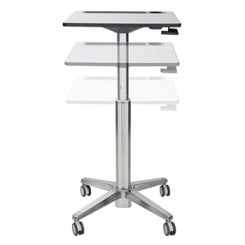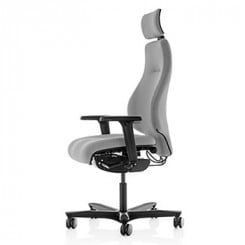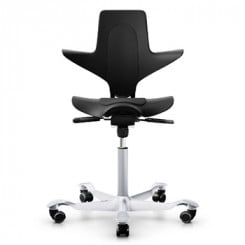Imagine going back to school now. Not only do you have to retain works of Shakespeare and avoid objects regularly being thrown towards your head, but worst of all, you have to sit in a plastic chair with four flimsy legs, hunched over your desk. Regardless, you are expected to pay attention throughout and refrain from fidgeting.
We often talk about the importance of ergonomic workstations for office employees and often recommend regularly alternating between sitting and standing, but rarely question why children are sitting for hours at a time at ill-fitting and uncomfortable workstations at school. Is it time we supply standing desks for school children?
Many schools are still struggling to fulfil physical education needs, and despite investment from the government over the past decade, on average, children only receive two hours of physical education a week. This coupled with sitting for long periods of time and fewer recreational breaks has seen the rise in children living increasingly sedentary lifestyles. Studies have shown that not only can this have long term mental and physical health effects but can also severely impact children’s concentration.
The Huffington post published a recent study from the Center for Disease Control and Prevention in the US questioning if this lack of physical activity has contributed to the diagnoses of severe ADHD (attention deficit hyperactivity disorder) increasing by a factor of six in the past 10 years.
On reviewing these recent findings, Grove House school in Bradford decided to rejuvenate their classrooms and pilot a programme to install standing desks. Their trial saw a half of a class seated and the other half spending at least 230 minutes each week standing. As well as measuring the children’s height, weight and circumference, this study also measured blood pressure and motor skills. An article from the Independent reported that teachers felt just two weeks in that they had seen a huge improvement, not only in the children’s concentration but also noticeably better behaviour; ‘It keeps them focused. They’re working better, their concentration is better, and when given the option, they want to continue standing rather than going back to sitting”, said one.
Ergonomic office chairs are designed based on dynamic movement which encourages the user to frequently change position. This allows for better circulation and productivity, as users will not feel the need to get up as often opposed to a stiff fixed seat. The same principle applies to children that are given access to standing desks. By allowing them to have the choice between sitting and standing, in just two weeks this study revealed that the children fidgeted less and continued to stay alert throughout the day. These adjustable desks also enabled the children to establish the correct desk height when they decided to sit. Although there had been some scepticism around the state of the students work, the content, quality and presentation of work was shown to remain steady if not better when working from a standing position.
We believe that prevention is better than cure and in encouraging children to lead less sedentary lifestyles that they can carry through to their adult lives. One simple change is to give them ergonomic workspaces that fuel their productivity and creativity, and we hope that by the time they have got their grown-up dream jobs, ergonomic workstations will be provided as standard.







